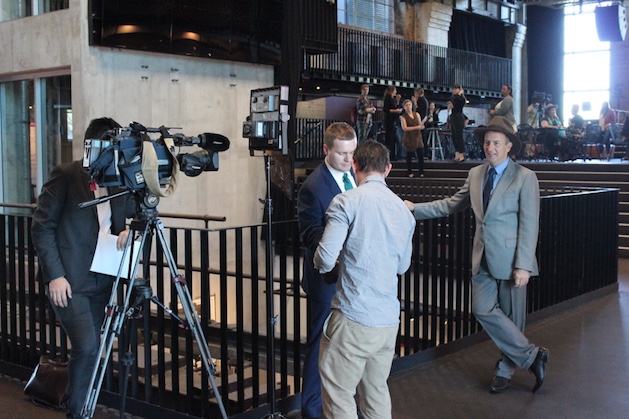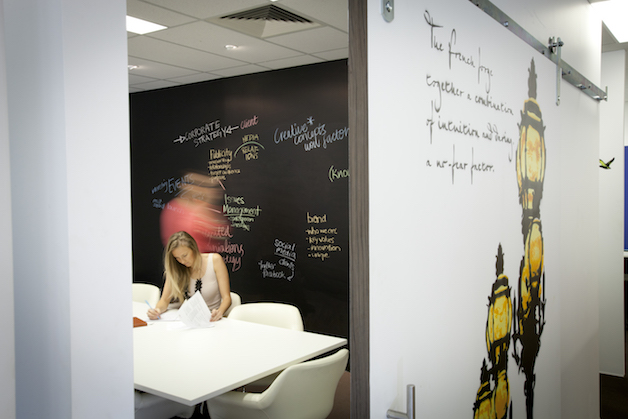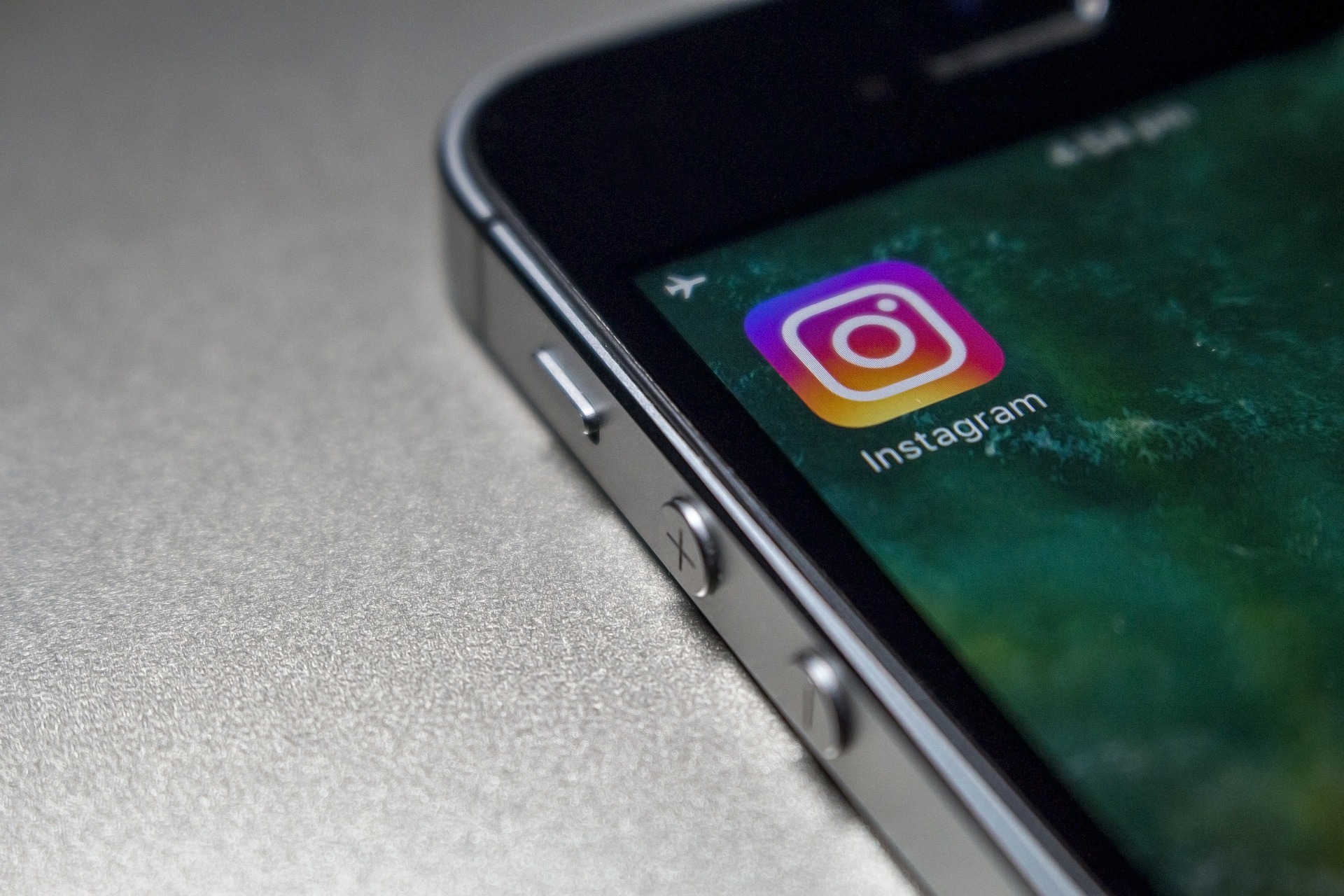-
How to: Nail an interview
The prospect of a media interview can be overwhelming and nerve-wracking but it doesn’t have to be! Those who haven’t had proper media training can find the approach by media anxiety-producing.
At KDPR we boast a broad array of experience and skill in the media realm. Our Managing Director spent many years being the one giving the interviews at Network Ten. Our staff are either trained journalists or work with media, knowing what they want and how they want it, every day.
If you’re feeling daunted or overwhelmed by the prospect of media interviews, there’s no need to panic! KDPR offers excellent media training services for those preparing for a media interview. After a session with us you’ll know exactly what to expect and how to get your message right.
In the meantime, we have developed a range of quick tips for interviews with print, radio and TV journalists.
The Basics
When giving an interview you have to be prepared to deliver a perfect performance. Although it is possible for some to ‘wing it’, being organised is a must for the majority of us. You need to understand how the media works and how journalists think in order to tailor an effective message. Aim to develop three core messages, and don’t forget to pay attention to nonverbal language (dress code, eye contact, even tone of voice!)
Print Interview
Print interviews are generally conducted over the phone. They are usually more in-depth than a radio grab or a voice-to-camera television piece, so it’s essential to bring your notes. Remember that even though the interview is via phone, journalists can quickly tell if you mean what you’re saying. Don’t be afraid to be animated while you speak!
Radio Interview
Radio interviews are also done mostly over the phone. This medium is as instantaneous as it gets, so ensure you’ve done your preparation and developed core messages before the interview. Keep your answers concise and try to have fun; never underestimate the power of an engaging tone of voice.
TV Interview
This is often labelled the most ‘daunting’ of the three mediums. Bearing that in mind, remember to relax! There is a performance aspect to an excellent TV interview; you must be engaging but not overbearing. Stick to your key messages, but not too religiously, or your message will come across as artificial.
We won’t deny it; media interviews can be completely overwhelming if you aren’t prepared. Our media training services are designed to prepare you for absolutely anything that comes your way in an interview. Ask us for help at KDPR; we’ll make sure you get your message right.
-
The importance of communication skills in PR
Having effective communication skills when working in public relations is essential for PR projects and assignments to run smoothly and to their fullest potential.
There are some certain tips and tricks that lead to great communication whilst working in PR, here are a few:
-
1. The importance of two-way communication

Two-way communication between multiple parties is essential in order for projects to run smoothly. This is particularly important between the PR professionals and their client. Clear, two-way communication allows for prompt responses to shifting priorities and identification of any amazing possibilities as well as identification of any issues. PR agency staff work best as an extension of the in-house team, kept constantly in the loop of communication.
-
2. The importance of constant communication
It is important for there to be constant communication throughout the three main stages of a PR project. These are:
Strategy development, goals and target setting
Delivery
Post project feedback and reporting
Clear communication at the start of a project ensures strategic goals are set and targets are well-defined. Communication is important during the delivery phase of a project to ensure priorities haven’t shifted and the tactics are working effectively. The final phase of the project is recognition of all the work and feedback on its effectiveness.
-
3. The importance of effective written communication

Between all the phone calls and meetings the importance and effectiveness of a well-written piece can often be forgotten. Written communication is time-efficient and allows for specific goals and targets to be defined. The result is less misinterpretation – the communique will be ‘archived’, the content to seen and saved. Written forms of communication can also help create ‘templates’ for how the PR business has previously dealt with projects and obstacles in the past.
These tips and tricks are stepping stones to happy, healthy, effective communication – the cornerstone to a great PR/client relationship.
-
-
2016 Sensis social media report
The annual Sensis Social Media Report – a survey of 800 consumers, 1000 small to medium businesses, and 100 large businesses – provides valuable insights into the social media habits of Australian consumers and businesses.’
It informs the decision-making of business owners around their exploration of the cost-effective digital avenues of the online world. It’s an important tool by which they improve customer engagement and target marketing efforts toward a specific audience. The increasingly large number of Australians that use it has cemented social media as one of the most effective weapons for communicating with and advertising to consumers.
According to the report, the average Australian owns three internet-enabled devices – most commonly smartphones – which provide instantaneous, around-the-clock access to social media. It found we spend more than 12 hours per week on Facebook alone, the vast majority accessing social media sites multiple times each day.
Businesses are taking notice, but it comes as little surprise that many of them struggle to keep pace with the rapidly evolving online landscape generally, and social media specifically.
Facebook was overwhelmingly the most popular platform among businesses, used by 89 per cent of small, 79 per cent of medium and 89 per cent of large businesses respectively. Conversely, a much lower proportion of businesses said they used Instagram, with only 12 per cent of small, 28 per cent of medium and 42 per cent of large businesses active on the platform.
This is interesting, and at KDPR the figures struck us as counterintuitive. Through our experience in public relations, consulting regularly with clients on social media, we have found, on average, Instagram to be the most effective platform. It seems strange that so few businesses have invested in it.
This anecdotal evidence shows the effectiveness of social media channels is highly circumstantial and should be assessed on case-by-case basis. What works best for one company might not for another and results achieved online are likely to vary based on the size and nature of a business, and its audience.
While useful, studies like the Sensis Social Media Report should not be taken as gospel. Businesses should not be afraid to experiment with a variety of different social media platforms until they find the one that works best for them.
-
Are you speaking the same language as your target audience?
With the results of the Federal election still being counted, it would be fair to assume the communications’ practitioners behind the campaigns are busy counting up their own wins. How much coverage was achieved? Did all of the key messages appear? Were the calls to action strong enough? Did the tone of the messaging resonate with the target audience?
Key elements of a communications campaign include ensuring a clear understanding of who you’re targeting and most importantly, how they prefer to receive key messages. Audiences have a variety of communication channels to receive information and therein lies the challenge for the communications practitioner. The ability to identify what channels to invest time and money, to gain cut-through and results, is a mixture of thorough research, data crunching and taking calculated risks. This process starts well before the campaign goes to market. It is vitally important for the communicator and the audience to be on the same page and understand who the campaign is designed to reach and why. To make this process easier it is important to ask the following questions:
To make this process easier it is important to ask the following questions:
- What does success look like for this campaign?
- What do you want your target audience say about you after this campaign?
- What does the commercial success for this campaign look like?
- What are the time frames?
While it is exciting and fun to plan and develop ideas for a new campaign, it is even more exciting to see a campaign deliver the results intended.




